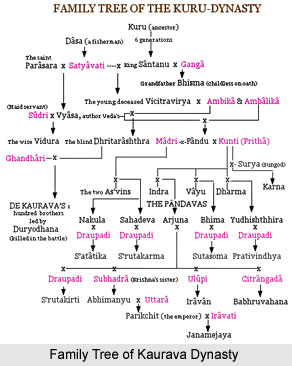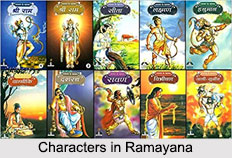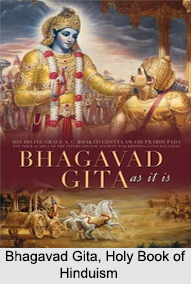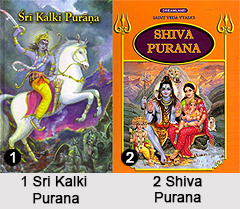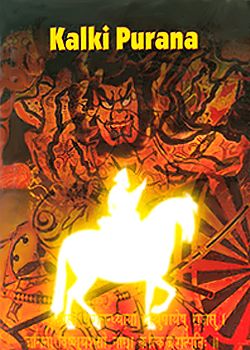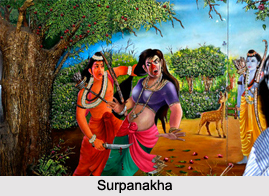 Sage Narada says that earlier there was only one Varna which was Brahman created by Lord Brahma. Later on it was divided into four depending on the pursuits followed. While discussing the concept of Varna in Narada Purana, Narada says that one should follow one`s dharma based on his Varna.
Sage Narada says that earlier there was only one Varna which was Brahman created by Lord Brahma. Later on it was divided into four depending on the pursuits followed. While discussing the concept of Varna in Narada Purana, Narada says that one should follow one`s dharma based on his Varna.
The whole cosmos was a form of Brahma earlier but later different. Varnas arose depending upon the people`s endeavour. Those who were born twice, never did their duties, wanted enjoyment and characterised by red colour became Kshatriyas. These twice-born who, giving up their duties, pursued agriculture and cattle-rearing and were characterised by yellow colour, became Vaishyas. Those twice-born, dark coloured, cruel and penny-pinching following all pursuits and being unclean became the Shudras.
The Brahmins, born from the mouth, were to be the teachers; the Kshatriyas born from the arms were to be the guards. The Vaishyas, born from the thighs, were to be suppliers of food and the Shudras, born from feet, was to be servant of the three mentioned types.
In consonance with Narada one should follow the dharma based on one`s varna. Some mannerisms are applicable to all namely desiring welfare for all, lovable talking, satisfaction, and being humble. By adhering to these, one will be a sage. The three varnas are Brahmins are twice born because of their two births, one from the mother`s womb and the other by Upanayana`s performance.
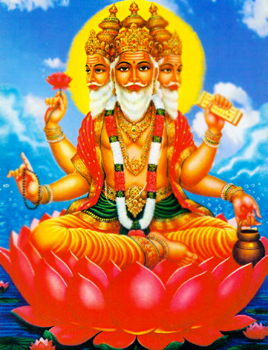 To Narada, the superior is Brahmin who is teacher of all. They are the finest among the human beings. It is advised that Brahmin should be gratified by giving gifts as Lord would be happy and saves the contributor from going to hell. Being antagonistic to Brahmins is considered as an evil which has no expiation. A Brahman should never be killed under any circumstance. One who refuses Brahman a reward after invitation or obstruction is created are sins. A Brahman is considered to be highest in rank compared to others due to his scholarly acquirements, peaceful and kind nature, and truthfulness. He learns Vedas, observes vratas, mind is pure. His duties are the acceptance of gifts, learning and teaching of the Vedas. There are certain prescriptions for a Brahman in kali Yuga like evading sea voyage, killing of cow, marrying a woman of different Varna, eating flesh and others to name a few.
To Narada, the superior is Brahmin who is teacher of all. They are the finest among the human beings. It is advised that Brahmin should be gratified by giving gifts as Lord would be happy and saves the contributor from going to hell. Being antagonistic to Brahmins is considered as an evil which has no expiation. A Brahman should never be killed under any circumstance. One who refuses Brahman a reward after invitation or obstruction is created are sins. A Brahman is considered to be highest in rank compared to others due to his scholarly acquirements, peaceful and kind nature, and truthfulness. He learns Vedas, observes vratas, mind is pure. His duties are the acceptance of gifts, learning and teaching of the Vedas. There are certain prescriptions for a Brahman in kali Yuga like evading sea voyage, killing of cow, marrying a woman of different Varna, eating flesh and others to name a few.
In Narada Purana the Kshatriya studies the archery, Vedas and rules of a Kingdom. He gives protection, offers gift to the Brahmins, performs sacrifices, and rebukes the evil.
A Vaishya as per sage Narada is engaged in agriculture and business and learns Vedas.
A Shudra performs the duties as a servant of three groups.
The four stages of life mentioned in Narada Purana are Brahmacarya, Grihasthya, Vanaprastha and Sanyasa. To protect dharma these stages of life was created by Brahma. There are certain regulations concerning upanayana and brahmacharya. To practice upanayana for three castes the age between eight and sixteen years is perfect for a Brahmin, for Kshatriya age between eleven and twenty two, and for Vaishya age between twelve and twenty four. Here again the belt, skin to be worn and stick to be used have all been mentioned vividly according to the castes.
After upanayana, till completion of the study of the Vedas, the boy has to stay with the teacher. After early morning bath he brings fuel, fruits for the teacher. He should survive on food collected by begging from those who perform sacrifices. Bhiksha is accepted only from good people and should be taken after offering to his teacher and with his consent. He should never subsist on one meal and ought to avoid honey, flesh, salt, and many others to be mentioned. The teacher imparting Vedic knowledge commands unique admiration. One should wash his teacher`s feet and sip the water and after touching teacher`s the feet begin the studies
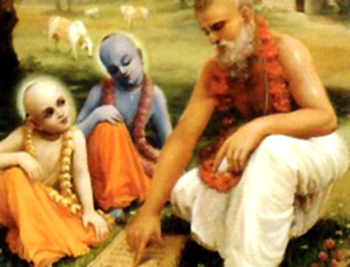 Dharma, Artha and Kama are attained during the stage of Grihastha. His source of income has to be through professions like teaching and then stay with his wife. A householder`s duties are also described. To mention a few should maintain his neatness, perform Vedic rituals on a daily basis, should not sleep during day time and so on.
Dharma, Artha and Kama are attained during the stage of Grihastha. His source of income has to be through professions like teaching and then stay with his wife. A householder`s duties are also described. To mention a few should maintain his neatness, perform Vedic rituals on a daily basis, should not sleep during day time and so on.
Waking up during the Brahma muhurta, he should think over the ways and means of his livelihood, which are not against the four human pursuits. A Grihastha should bathe twice, in the morning and in the noontime which is followed by five Mahayajnas which are performed daily. The stage of a householder is held to be the source and support of the three stages of life.
The next stage of life is Vanaprastha, after leaving his wife in the care of the sons or taking her to the forest along with him. He is to bathe thrice daily and perform sacrifices, eat fruits and The Vanaprastha (forest-dweller) is to taka bath thrice daily, allow his hair and nails to grow, sleep on bare ground, observe celibacy, perform the five daily sacrifices, eat only fruits and roots, and keep himself engaged in Vedic studies. He needs to be completely devoted to God, and also perform rigorous deeds like bearing heat and cold and few others. He is supposed to visit holy places, practice Yoga.
When he becomes disinterested slowly in worldly things, he should take to Sanyasa. He should resort to the study Vedanta. He has to self controlled and not egoistic at all. There is no difference between friend and foe or praise and insult to him. He should bathe thrice a day, chant the Pranava and with all senses controlled should meditate
The information given by the Narada is similar to that described in the Mahabharata. It has been seen that Narada follows the same line of philosophy as in other texts as common principles were too inflexible to be altered.













